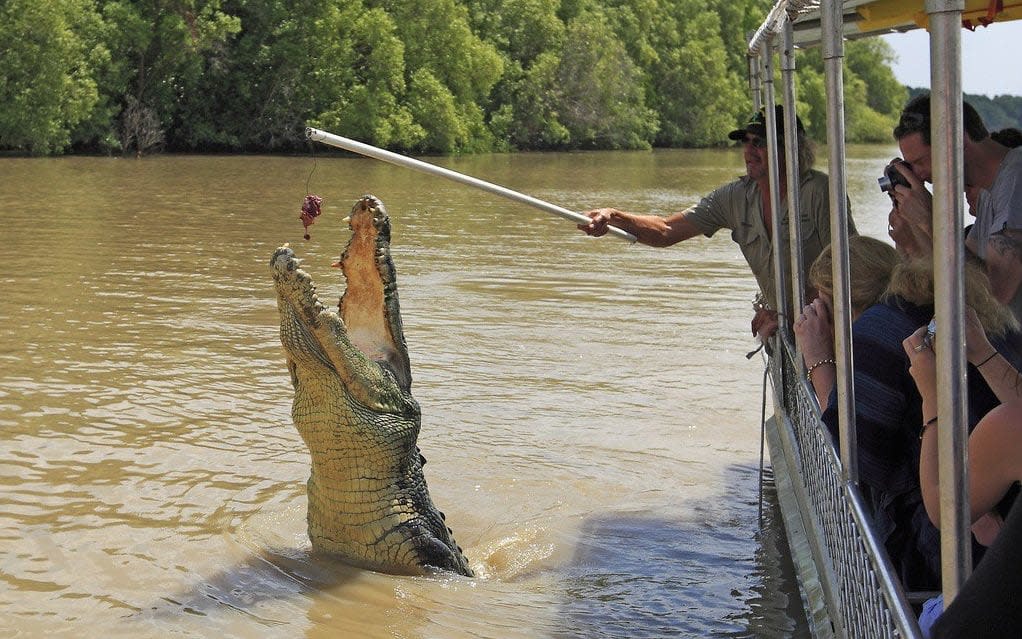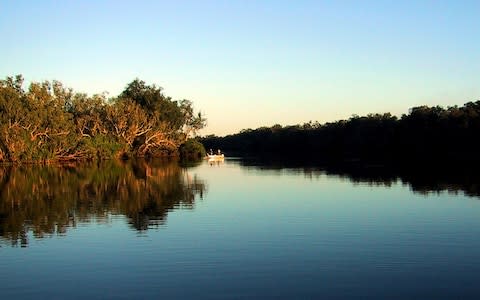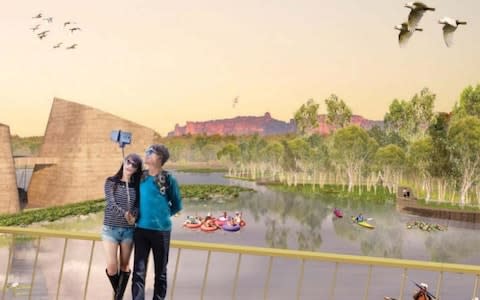Plans for tourist hub in Australia's biggest national park run into treacherous water amid croc threat

In the remote township of Jabiru in the heart of Kakadu, Australia’s largest national park, the traditional Aboriginal owners are in a quandry. They want to attract more tourists in a bid to salvage the area but are grappling with a growing problem: crocodiles.
The town, about 150 miles from the northern city of Darwin, was built in 1982 to service a nearby uranium mine and is due to be demolished when the mining ends in 2021.
To try to save the town, the Mirarr people, whose ancestors have lived on the land for some 65,000 years, want to turn it into a tourist hub, proposing an ambitious £250 million plan for an international airport, eco-lodge and – significantly – a “croc-free” lake that would allow visitors to safely seek respite from the tropical heat.
But this plan has now hit an obstacle, as experts have suggested that protecting swimmers in the lake from the region’s growing crocodile population would be far too expensive to implement.
In the past three years, at least ten deadly saltwater crocodiles have been removed, including a male that was twelve feet long.

John Lever, founder and owner of Koorana Crocodile Farm in Queensland, said he believed it was possible to make the lake crocodile-free but this would require an underwater fence that would need to be replaced every five or six years and would probably not be worth the cost.
“I know the lake well, but they are constantly pulling crocs out of it,” he told The Telegraph.
“Obviously people in the hot tropical environment want to immerse themselves in the water. Anything is doable if you throw enough money at it. But I am not sure it would have a return.”
The lake debate follows growing concerns about the threat from crocodiles, whose populations have soared across northern Australia following bans on hunting from the 1970s.
In the Northern Territory, there were an estimated 3,000 saltwater crocodiles when a hunting ban was imposed in 1971, but there are now believed to be more than 100,000.
In some areas, crocodile populations have returned to the levels they were at before the arrival of British settlers.
Grahame Webb, director of Crocodylus Park in Darwin, said crocodile-proofing the lake would be an “engineering feat” and would require a 20-foot fence.

“[Crocodiles] can move overland — you can't just block them off in one way,” he told ABC News. “They can find their ways around things, so you'd really have to enclose it in some way that they just couldn't get through."
Attacks have been occurring with greater frequency, including in and around Kakadu, a World Heritage-listed park that spans 7,700 square miles and is about half the size of Switzerland.
The attacks include the death last year of a 47-year-old man who was taken while walking along a crossing at East Alligator River on the park’s eastern outskirts.
In 2014, a 12-year-old boy died while swimming near Jabiru and a 15-year-old was bitten on both arms but survived.
Following the removal of six crocodiles from Jabiru in 2016, Garry Lindner, Kakadu’s crocodile manager, issued a public warning: “No matter how hot it is, don’t enter Jabiru Lake.”
“Crocs will always see you before you see them,” he said. “Remember in any body of water in the Northern Territory – crocs are probably present. And that includes our lake.”

In July, the Northern Territory government revealed plans for the “safe swimming” lake at Jabiru, including images showing indigenous people and visitors happily swimming and diving in.
The Gundjeihmi Aboriginal Corporation, which represents the Mirrar people, says it wants to restore Kakadu’s reputation as a popular tourist attraction alongside the Great Barrier Reef and Uluru.
In the late 1980s, about 150,000 international visitors visited Kakadu each year but this has fallen to about 30,000. According to a report prepared for the corporation, the extra tourism could help to save Jabiru but it would be important to ensure the lake and town were “absolutely crocodile free”.
Justin O'Brien, the chief executive of the corporation, said he believed it would not cost too much to make the lake safe, but insisted this was not crucial to the effort to save Jabiru and boost tourism in Kakadu.
“Whether you can swim in the lake is irrelevant to the plan to retain the town,” he told The Sunday Telegraph. “Kakadu is at a crossroads here. We are talking about turning around a place that is special.”
